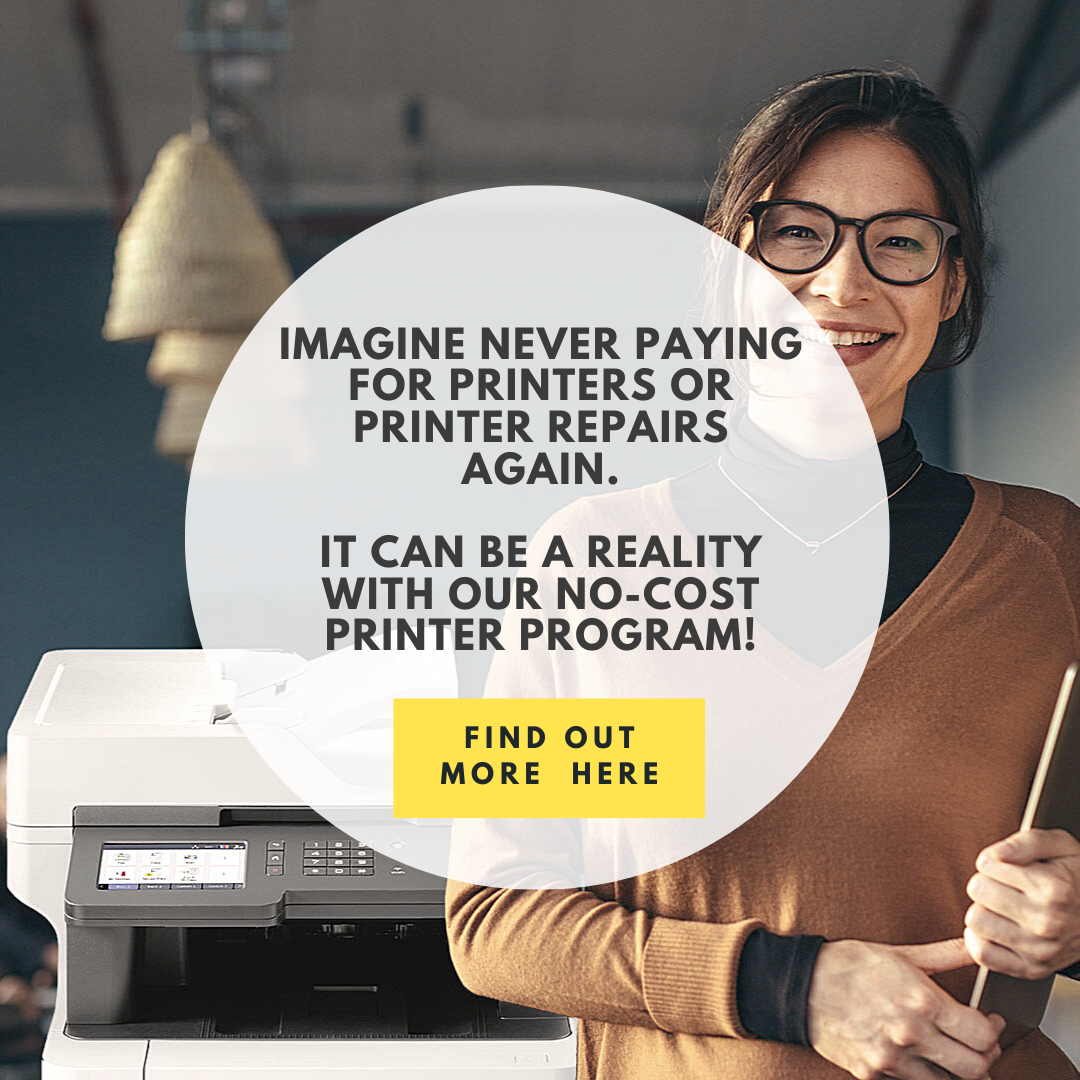In these modern times, we tend to take the breathtaking technology around us for granted. From small wonders like our smartphones to massive miracles like the Large Hadron Collider, we simply assume tech is there and working for us.
Believe it or not, the same can be said about our printer toner and cartridges. We do take these printer supplies for granted, but maybe we shouldn’t when considering these facts:
- The average toner cartridge contains more than 80 components
- An inkjet cartridge can fire more than 1,120 ink droplets simultaneously per second
- Each ink nozzle in a printer cartridge is 1/7th the diameter of a human hair
- An average of one gallon of oil is used to produce one (yes one) toner cartridge
Bet you won’t look at ink or toner the next time you hold one in your hand. Cartridges and toner are more like the Star Trek Enterprise than office goods. There is a very complex science to ink and toner.
What’s more, many people don’t even understand the difference between toner and ink, knowledge that can be valuable when it comes to office productivity and saving costs.
Where does each go?
Let’s get the easy one out of the way. Laser printers use toners while inkjet printers use ink when it comes to bringing your ideas to life on paper.
That’s it. No fake news. Now we can move on to the difference between toner and ink.
What are Ink Cartridges?
As mentioned in the “Buzzfeed-esque” list above, inkjet cartridges are comprised of microscopic nozzles that spray dye or pigmented ink onto paper in the form of droplets — turning on and off thousands of times per second. Sophisticated printer software controls all the nozzles. The ink in your cartridge is composed of 98% water, as well as these elements:
- Glycol
- Glycerine
- Dye or pigment resin
- Alcohol
If you want to know the exact formula — forget it. Inkjet cartridges are a huge revenue generator for printer brands. Thus, companies guard their formulas better than McDonald’s does its secret sauce formula (obviously a derivative of 1000 Island Dressing, right?). A better analogy might be the gold in Fort Knox; according to Consumer Reports, printer inks costs around $50 an ounce (and the shocking truth is that many printer models deliver half or less of valuable ink to a page, with some managing no more than 20 to 30 percent – mostly because of maintenance and testing).
Factoid: Printer cartridges fire ink droplets by using vapor with the equivalent pressure of being 10,500 feet underwater, which only Aquaman could survive.
What is Toner?
This is where things get dry, Aquaman
Toner is mostly composed of finely ground polyester (a type of plastic). The polyester powder holds a static charge that sticks to anything with an opposite charge. Think of slacks sticking to your legs.
In a printer, a laser produces an electrostatic template of the desired images on a rotating metal drum, which contains an electrical charge. A cartridge dispenses toner on the drum. The toner adheres only to certain places where the laser alters the drum’s electrical charge.
At the same time, a laser printer also charges the sheets of paper while they pass through the machine. As the sheets curl past the drum, it yanks the charges off the toner in the exact shapes that make up images and text. During this process, a hot fuser essentially melts the polyester in place, making sharp, smudge-free prints.
Yes, as dry as a Monty Python sketch…yet as futuristic as a NASA laboratory.
Factoid: While printing, the fuser that causes the toner to melt onto paper can reach up to 400 degrees Fahrenheit. That can cook a chicken in under an hour, sure, but we suggest not baking food with your laser printer.
Which One for Me?
Beyond all this cool tech science that happens every day at work, choosing between a laser or inkjet printer really depends on your needs. But those needs are important to address – especially in a time when printer costs are just below that of office utilities, rent, and payroll; and the typical office worker prints 10,000 pages per year, at an average cost of $725.
Generally, inkjet printers are cheaper than laser printers, just as ink cartridges are cheaper than toner cartridges. However, toner tends to get much more bang for your buck. In other words, the overall cost-per-page of inkjet printers is higher than laser printers. Laser printers will save you more money in the long run, especially if you’re printing thousands of pages a month
For more of a breakdown, let’s get back to some “Buzzfeed-esque” listicles:
Laser printers are better for:
- Black & white documents
- Larger offices
- Faster need of documents (can print up to 100/minute)
- Smaller need for paper size variety
Inkjet printers better for:
- High-quality photos or anything with brilliant colors/tonal depth
- Small/home businesses
- Less demand for quick printing (can print up to 16 pages/minute)
- Larger need for paper size variety (and this can include fabrics and glossy paper)
Factoid: The average inkjet printer lasts two to three years, while the average laser printer lasts approximately five years.
In a perfect world, an office would have both an inkjet and laser printer, leveraging laser for volume and monochrome documents while tapping into inkjet for color docs and photos. Sadly, the Large Hadron Collider hasn’t created this perfect office environment for many companies. But we know an independent photographer would benefit from an inkjet printer, while a law firm should depend on laser printers.
In between the photographer and the lawyer, your office should find out where it stands when it comes to buying printers. We always recommend our office print savings calculator. At the very least, you can impress coworkers at the next holiday party with your awesome ink and toner factoids.







